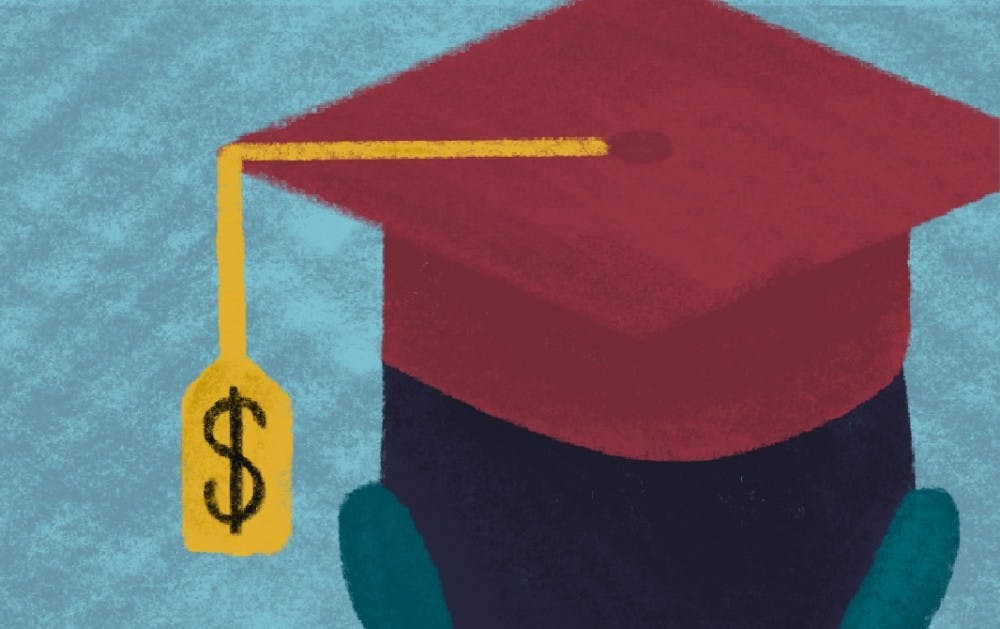With student debt reaching an all-time high of $1.5 trillion and the average borrower of student debt owing $34,500, the call for free or reduced college tuition has earned the support of more than half of young adults in America that were surveyed by the Harvard Kennedy School's Institute of Politics.
I do believe in affordable tuition and making sure that price isn't a factor as to whether or not someone gets a college degree, but free tuition is still not the solution.
The movement to make college tuition-free for all Americans may seem practical and well-intentioned, but it would result in benefiting mostly people in the upper class, require radical changes on how schools would run and be an unaffordable burden on our taxpayers.
“I know a lot of the candidates running for president support free college, but they missed the point that nothing is free,” said Nancy Roberts, a professor in ASU's Department of Economics.
It's not that poor college graduates with bachelor's degrees are owing more than $100,000 in student debt. According to an analysis from Urban Institute, most student debt is held by households who are in the upper class and can afford it. Poor students still have debt, but their portion of the debt is significantly lower than the upper class.
“There are ways to help poor people without providing free education for middle income and high-income people,” said Roberts.
For many households, the massive amount of money they have toward their student debt is also attributed to the fact that they were wealthy enough to afford to take out these loans and pursue higher education.
The analysis also showed that the highest 25% of people owe 34% of the entire student loan debt and the next highest quartile owes 29%. While the lowest 25% owes only 12% of student debt.
In fact, only 28% of debt is held by students with a bachelor's degree, while 48% are held by people with graduate degrees. Free tuition would disproportionately help out upper-class households as most of them would get away with not having to pay tuition that they were able to afford.
Without radical changes in the way public universities operate, these schools will not be ready for the federal government to give out free college tuition. For example, in-state students at ASU pay around $702 per credit hour as a part-time college student at ASU.
With free college, students could easily take advantage of this system and withdraw from classes without ever having to worry about any potential financial burden.
If more students start to take more than four years to complete their degree, this will become a burden that is unfairly transferred to the taxpayers.
“It’s not a matter of if it’s free, it about who’s going to pay for it”, said Roberts.
If the United States wanted to follow in the footsteps of countries that have implemented tuition-free college like Germany, they would have to discourage a large number of people from going to pursue higher education at a young age.
In the fourth grade, students in Germany take a test that determines what track out of the three the student will take. Only one of these tracks guarantees a college degree. Only one-third of German high school graduates will go to college compared to two-thirds in the United States.
Germany was unable to make university free for all college students without also being highly selective — contradictory to the message of inclusivity in ASU's charter.
Instead of making colleges tuition-free, ASU needs the U.S. to focus on making sure that lower-class students receive more funding through increasing and building upon programs like FAFSA.
“If college costs so much money then poor people can go to college but you know we have all kinds of Pell grants and financial student aid that help," Roberts said.
Politicians should build upon the system we have today instead of radically changing a system and disproportionally benefiting rich families over poor families.
Reach the columnist at knmoore6@asu.edu or follow @Kellenmoore23 on Twitter.
Editor’s note: The opinions presented in this column are the author’s and do not imply any endorsement from The State Press or its editors.
Want to join the conversation? Send an email to opiniondesk.statepress@gmail.com. Keep letters under 500 words and be sure to include your university affiliation. Anonymity will not be granted.
Like The State Press on Facebook and follow @statepress on Twitter.




